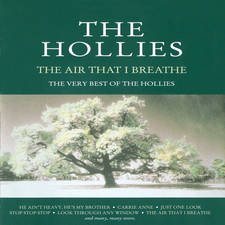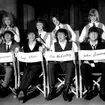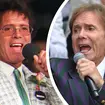'Come on Eileen' by Dexys Midnight Runners: The making of the 1980s pop classic
18 May 2022, 15:27 | Updated: 10 January 2024, 13:33

Dexys – Nowhere Is Home film trailer
Dexys signature song is a genre-hopping, double-platinum selling pop masterpiece.
Listen to this article
Dexys have been successfully reformed for coming up to two decades now – more than twice the length of their original run.
They're still touring and recording fine new music, but their legend was already secured way back in the 1980s with their run of hit singles and three excellent albums.
- Can you name these classic 80s videos just from a still image?
- Listen to Gold's Summer Greats on Global Player
- How well do you remember 1980s TV shows?
Their very best-known song 'Come on Eileen' is 40 years old now, but still sounds as fresh, strange and brilliant as it did four decades ago.
But do you know who wrote the song? And what's the difference between all those slightly-different versions you might hear on the radio.
Read on as we celebrate Dexys Midnight Runners' 'Come on Eileen' with everything you need to know about the song.
Who wrote 'Come On Eileen'?

Come On Eileen
If you look at the label, the writers of 'Come On Eileen' were Kevin Rowland, Jim Paterson and Billy Adams.
However, when Rowland was getting ready to relaunch his solo career with Creation Records in 1997, he claimed that he'd actually stolen the song from his former bandmate Kevin 'Al' Archer, who had quit Dexys Midnight Runners in 1981, a year before 'Come On Eileen' was recorded and released.
"I experienced hollow success with 'Come On Eileen' and Too-Rye-Ay, the musical sound of which... mixed with Tamla-type soul, came from Kevin Archer and not me, as I claimed," Rowland was quoted as saying in The Independent.
"The idea and sound was his; I stole it from him, hurting Kevin Archer deeply in the process. I conned people all over the world, from the people close to me and the people I worked with to the fans, to the radio and TV programmers, and I made a lot of money.
"To everybody I conned, I'm sorry. To my beautiful friend Kevin Archer, I love you, I'm sorry I hurt you. I was jealous of you and your talent. You deserved better, I hope you get what you deserve."

But in 2014, Rowland suggested that wasn't entirely right.
"Around 19 years ago I gave an interview about how I’d stolen 'Come On Eileen' from Kevin Archer," Kevin R told The Guardian.
"Some of it was true. Most of it was me punishing myself. I was in a dark place and thought it had all been him and I had no talent.
"What actually happened was... he played me his demos and he was using a combination of a Tamla-style beat with violins, which I thought sounded better than what we were doing.
"So I nicked that style, and the idea of speeding up and slowing down. I didn’t steal one note, one chord, one melody.... I shouldn’t have done it because he was my mate, but for years I signed over half my songwriting to him, so I paid my dues."

Barry & Batya Segal - Hava Nagila
The same year, Rowland told Songfacts: "We wanted a really good, jaunty rhythm. We felt under pressure. We really needed to write a song that would make the record company take us seriously, because the single before, which was 'The Celtic Soul Brothers', hadn't done well.
"We wanted a good rhythm and we found one. Lots of records we liked had that rhythm: 'Concrete and Clay', 'It's Not Unusual" by Tom Jones... I came up with that, 'Too ra loo ra', and I remember thinking, 'Wow, this is sounding really good'."
He added: "You get a feeling when you're writing a song. Something happens. And in the end it kind of finished itself.
"Then they had the breakdown and speed-up section. My friend, Kevin Archer, he had that in a song that he'd written, which I heard.
"His was a different melody. A different melody and a different rhythm, and different lyrics. But it was a speed-down, a breakdown, and a speed-up, like [Jewish folk song] 'Hava Nagila'."
On the front of the sleeve, the song is credited to Dexys Midnight Runners and the Emerald Express, a nod to violinists Helen O'Hara and Steve Brennan.
What is 'Come On Eileen' about and was Eileen a real person?
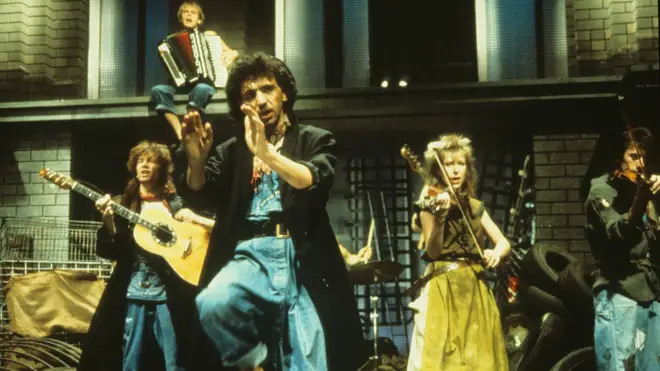
The original lyrics for the work-in-progress song didn't mention Eileen, but went "James, Stan and me" - a nod to influences James Brown and Van Morrison, who Kevin had nicknamed Stan.
"That was the original chorus, singing about people who influenced him to write the song – like he mentions Johnnie Ray," producer Clive Langer told Uncut in 2007.
"And then he came in one day and said I want to change the lyric completely, it’s a working lyric. And we actually liked 'James, Van and Me'! Because we’d been working with it and got used to it."
The story that Kevin used to tell was that Eileen was very much a real person. She was a girl Kevin grew up with and started dating when they were 13.

Dexy's Midnight Runners - Come On Eileen (Live)
Born to Irish parents, Kevin had been raised as a Catholic, it would explain that confessional line in the chorus "You in that dress / My thoughts (I confess) / Verge on dirty / Oh, come on, Eileen".
But it turns out that the whole "Eileen was Kevin's real-life girlfriend" was a little bit of poetic licence in those early interviews.
"For years I told everyone that Eileen was my childhood girlfriend," he told The Guardian more than 30 years after the song came out.
"In fact she was composite, to make a point about Catholic repression. On the Projected Passion Revue tour in '81 there was this girl interviewing us and she was going on about the spiritual nature of this music and I’m thinking to myself, 'Right, but that’s not what I’m feeling at this moment...'

Tura Lura Lural (That's an Irish Lullaby) (feat. Van Morrison) (Concert Version)
"She was really good looking, and I was reminded of being a teenager, surrounded by Irish Catholic girls you couldn’t touch, but at the same time with these overpowering feelings of lust which you’re not supposed to have."
The song kicks off with a namecheck and shoutout for rock 'n' roll pioneer Johnnie Ray ("Poor old Johnnie Ray / Sounded sad upon the radio / Moved a million hearts in mono").
It also nods at JR Shannon's 1913 Irish-American folk song 'Too Ra Loo Ra Loo Ral (That's An Irish Lullaby)', which had been covered by Van Morrison during The Last Waltz.
As well as urging Eileen to get it on with Kev, the song also explores that invincible feeling of youth despite the grimness of the surroundings: ("These people round here/ We're beaten down, eyes sunk in smoke-dried face/ They're so resigned to what their fate is / But not us").
Why does 'Come On Eileen' sound so different to everything else?

Come On Eileen (Single Edit)
One of the reasons 'Come On Eileen' still positively leaps off the radio 40 years on is just how quirky and original it sounds.
Regardless of how much it owes to Kevin Archer's experiments in sounds or old Jewish folk songs, the mashup of Motown and Irish folk with a dash of that post-punk fresh pop still sounds unlike anything else.
Then there's the big key changes from F major (intro) to C major (verse) to D major (chorus and bridge), and that improvised counter-melody in the bridge.

And if you're listening to 'Come On Eileen' and it doesn't sound like how you remember, you might be listening to one of the many slightly-different versions of the song.
The single version is 4:12. There's a version still at 4:07 without the fiddle solo. There's even two different album versions with that a capella coda, one clocking in at 4:32, and the other (our favourite) at 4:48.
Then for those with short attention spans, there's the 3:48 video version and 3:28 DJ edit.
When was 'Come on Eileen' released and where did it get in the charts?
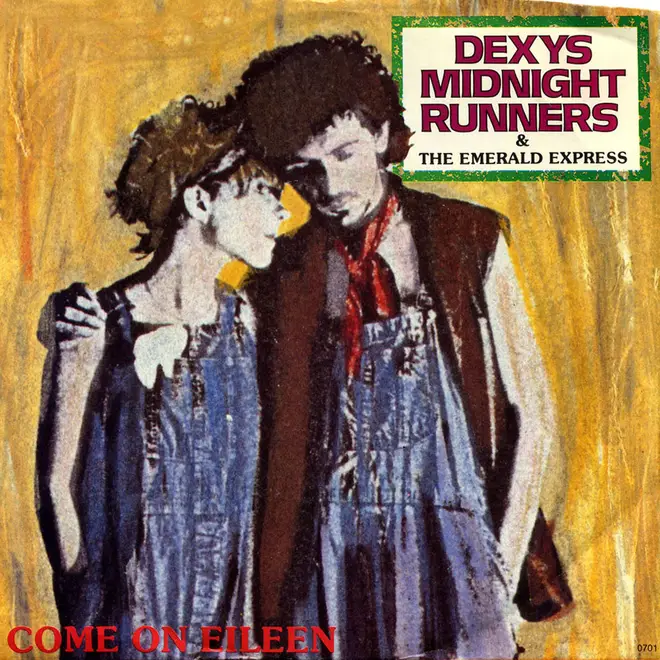
'Come on Eileen' was released as a single on June 25, 1982, with 'Dubious' on the flip in the UK and 'Let's Make This Precious' on the B-side in the US. The 12" was rounded out with 'Liars A to E'.
The song went all the way to number one in the UK AND the US.
It was the biggest selling UK single of the year, going double platinum, and it also went gold in Australia and Canada.
The song closed the band's second album Too-Rye-Ay, which was released on July 22, 1982, which went to number two in the UK and number 14 in the US.
Who made the iconic video for 'Come on Eileen'?

dexys midnight runners come on eileen
When Dexys released Too-Ry-Aye they fully committed to the bit, shedding their stylish threads and looking the part as old rustic folkies.
The music video for 'Come on Eileen' was by Julien Temple. Temple had by that point already made the riotous Sex Pistols film The Great Rock 'n' Roll Swindle, as well as music videos for artists as diverse as Neil Young, The Undertones, Judas Priest, Gary Numan, The Kinks, ABC, Culture Club and Depeche Mode.
A massive MTV hit, the video was shot in Kennington and features Máire Fahey (sister of Bananarama's Siobhan Fahey) as Eileen – just as she was on the cover of the single, which was inspired by the sleeve of Bob Dylan's The Freewheelin' Bob Dylan.
What films and TV shows has 'Come On Eileen' appeared in?

Spaced - Come on Eileen.
'Come On Eileen' has featured in a number of films and TV shows over the years, including Tommy Boy (1995), Get Him to the Greek (2010), Take Me Home Tonight (2011) and The Perks of Being a Wallflower (2012).
Perhaps most memorably, it was used extensively in 'Epiphanies' – the sixth episode of British sitcom Spaced.
Who has covered 'Come On Eileen'?

Badly Drawn Boy and Jools Holland and His Rhythm & Blues Orchestra - Come on Eileen
Given how massive it is, 'Come On Eileen' hasn't had as many high-profile covers as you'd imagine. We reckon people are scared of all those time and key changes.
Stars who have given it a go include Badly Drawn Boy feat. Jools Holland, Nouvelle Vague, and Lou Bega.
The most high-profile cover was a reworking of the song called 'Come on England', recorded by a group called 4-4-2 to celebrate the England football team in the UEFA Euro 2004 championships.
